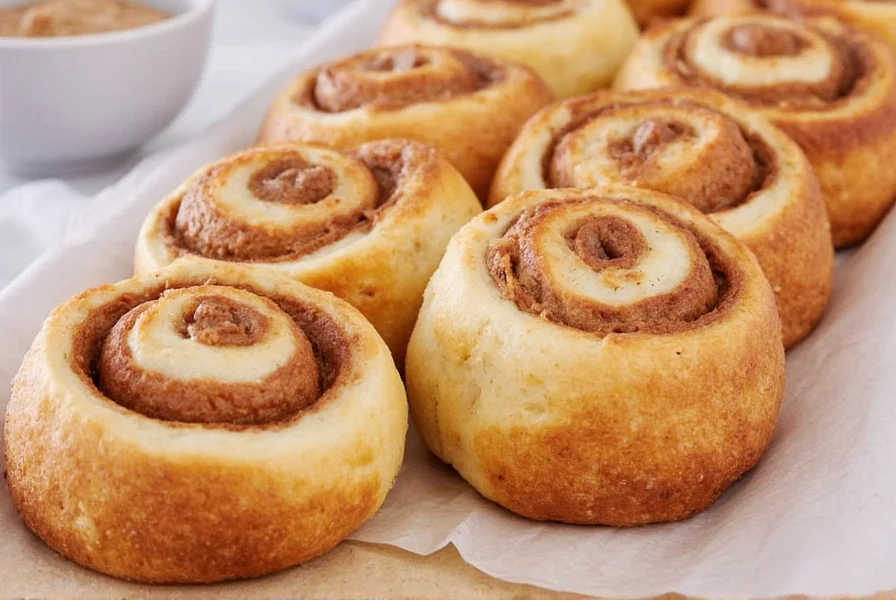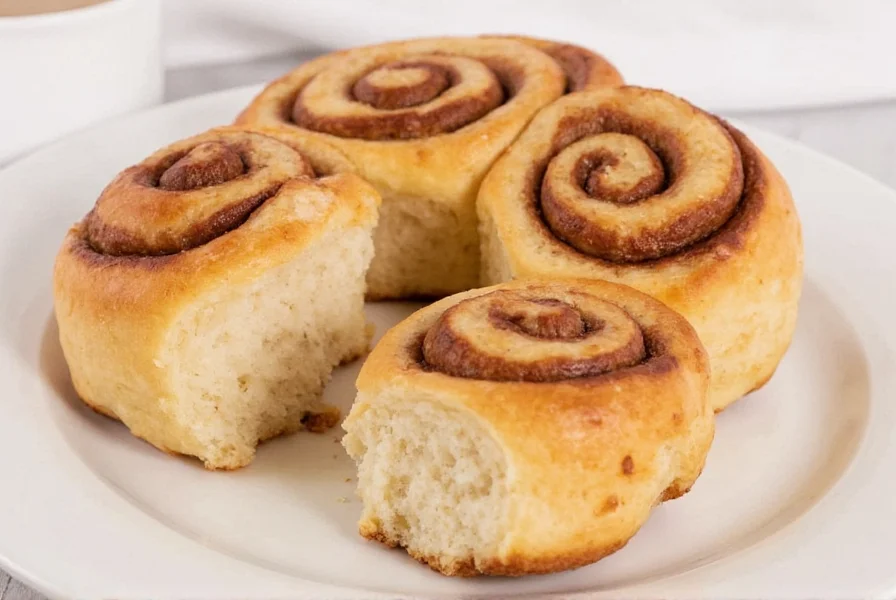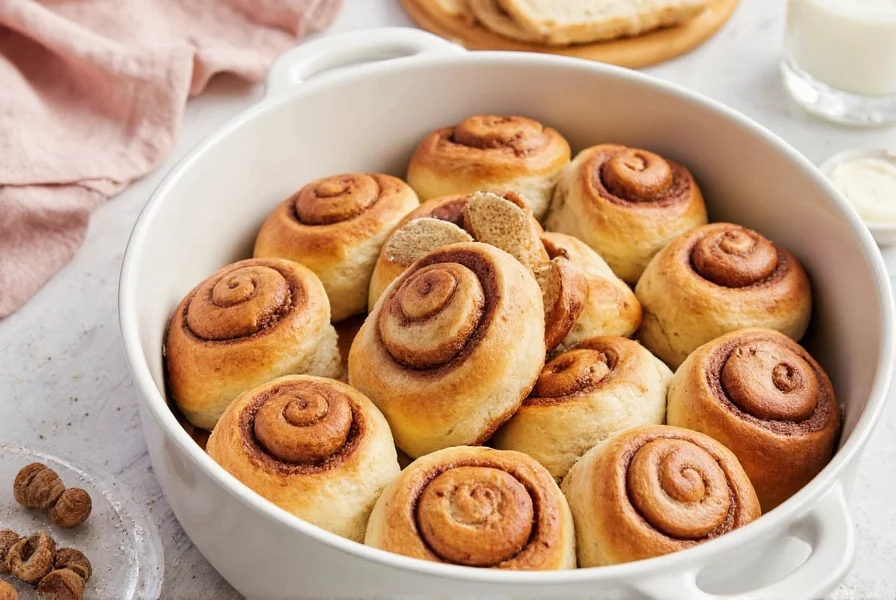If you've ever wondered why King Arthur cinnamon rolls stand out from other recipes, the secret lies in their attention to baking science. Unlike many cinnamon roll recipes that rely solely on volume measurements, King Arthur's approach emphasizes weight-based precision for consistent results. Their signature recipe produces rolls with an ideal texture—tender yet structured enough to hold their shape, with a caramelized bottom layer that forms during baking.
The Science Behind Perfect King Arthur Cinnamon Rolls
What makes King Arthur's cinnamon roll recipe exceptional isn't just the ingredients—it's the methodology. The company's test kitchen developed a process that addresses common pain points in cinnamon roll baking:
- Dough hydration control: Using a specific ratio of liquid to flour prevents both dry, crumbly rolls and overly dense results
- Yeast management: Precise temperature guidelines ensure optimal rise without compromising flavor development
- Filling distribution: Their technique prevents filling leakage while ensuring even spice distribution
- Icing formulation: A balanced sweet-to-tang ratio that complements rather than overwhelms the rolls
| King Arthur Cinnamon Roll Key Metrics | Standard Recipe | Professional Baker Adjustment |
|---|---|---|
| Dough hydration | 58-60% | 62-64% for softer texture |
| Proofing temperature | 75-80°F (24-27°C) | 82-85°F (28-29°C) for faster rise |
| Cinnamon-to-sugar ratio | 2:1 | 3:1 for stronger spice flavor |
| Bake time at 350°F | 22-25 minutes | 20-22 minutes for convection |
Authentic King Arthur Cinnamon Rolls Recipe
The official King Arthur Baking Company recipe has evolved through years of testing. Here's what makes their approach distinctive compared to generic cinnamon roll recipes:
Dough Composition
King Arthur's recipe specifies bread flour rather than all-purpose, which provides better structure for the enriched dough. Their formula includes a small amount of vital wheat gluten (optional but recommended) that enhances the roll's texture without making them tough. The dough hydration sits at approximately 59%, creating the perfect balance between workability and final texture.

Filling Technique
Unlike many recipes that simply spread butter and sprinkle cinnamon sugar, King Arthur's method involves:
- Using softened (not melted) butter for even distribution
- Creating a paste-like mixture of cinnamon, sugar, and a touch of cornstarch to prevent settling
- Leaving a small border along one long edge to seal the roll properly
- Cutting with dental floss or unflavored thread for clean slices
Baking Process
The secret to King Arthur's signature caramelized bottom layer comes from their specific baking approach. They recommend using a light-colored metal pan (not dark nonstick) and placing the pan on a preheated baking sheet. This technique ensures even heat distribution and prevents burnt bottoms while allowing the sugars in the filling to caramelize properly.
Troubleshooting Common King Arthur Cinnamon Roll Issues
Even when following the recipe precisely, home bakers sometimes encounter problems. Here's how to address the most frequent issues with King Arthur cinnamon rolls:
Dense or Tough Rolls
This typically happens when the dough is overworked or when incorrect flour measurements are used. King Arthur emphasizes using weight measurements (grams) rather than cups for accuracy. If using cups, properly aerate the flour before spooning it into the measuring cup—never scoop directly from the bag.
Filling Leakage
When the cinnamon-sugar mixture leaks out during baking, it usually indicates:
- Butter was too warm when applied to the dough
- Roll wasn't sealed properly along the edge
- Cut slices were placed too close together in the pan
King Arthur's solution: Chill the rolled dough for 15 minutes before cutting, and leave at least ¼ inch between rolls in the baking pan to allow for expansion.
Dry Rolls
Dryness often results from overbaking or incorrect oven temperature. King Arthur recommends using an oven thermometer to verify your oven's actual temperature, as many home ovens run hotter than indicated. The rolls are done when they reach an internal temperature of 190°F (88°C), not just by appearance.

Professional Variations for King Arthur Cinnamon Rolls
While the classic recipe is beloved, King Arthur's test kitchen has developed several professional variations that maintain the integrity of the original while adding creative touches:
- Overnight preparation: Refrigerate the shaped rolls for up to 18 hours before baking for more complex flavor development
- Spice enhancement: Adding a pinch of cardamom or nutmeg to the filling creates depth without overpowering the cinnamon
- Icing variations: Substituting cream cheese for part of the butter in the icing creates a tangy contrast
- Gluten-free adaptation: King Arthur's own gluten-free flour blend works surprisingly well with minor hydration adjustments
Storage and Reheating for Optimal Freshness
King Arthur's research shows that proper storage significantly impacts how well cinnamon rolls maintain their quality. Their recommendations:
- Room temperature: Store in an airtight container for up to 2 days (with icing separate if possible)
- Refrigeration: Up to 5 days—reheat individual rolls covered with a damp paper towel for 20 seconds in the microwave
- Freezing: Freeze un-iced rolls for up to 3 months; thaw overnight in the refrigerator then warm in a 300°F oven for 10 minutes before icing
For the absolute best texture revival, King Arthur's test kitchen recommends reheating in a conventional oven rather than microwave when possible. Place rolls on a baking sheet, cover loosely with foil, and warm at 300°F until heated through (about 8-10 minutes).
Frequently Asked Questions
What makes King Arthur cinnamon rolls different from other recipes?
King Arthur cinnamon rolls stand out due to their precise measurements (including weight-based for accuracy), specific dough hydration levels, and professional techniques developed through extensive testing. Their recipe uses bread flour for better structure, includes cornstarch in the filling to prevent settling, and provides exact temperature guidelines for proofing and baking that ensure consistent results.
Can I make King Arthur cinnamon rolls without a stand mixer?
Yes, you can make King Arthur cinnamon rolls by hand. The company specifically designed their recipe to be mixer-friendly but not mixer-dependent. When making by hand, allow extra time for kneading (about 10-12 minutes) until the dough becomes smooth and elastic. King Arthur's test kitchen confirms that hand-kneaded dough often develops better flavor due to slower gluten development.
Why does King Arthur recommend weighing ingredients for cinnamon rolls?
King Arthur recommends weighing ingredients because volume measurements (cups) can vary significantly based on how flour is scooped and packed. Their research shows a 20-30% variation in flour weight when using cup measurements, which dramatically affects dough hydration. Using a kitchen scale ensures consistent results, which is why their professional recipe includes both volume and weight measurements.
How do I prevent my King Arthur cinnamon rolls from becoming dry?
To prevent dry King Arthur cinnamon rolls, follow these key steps: measure flour accurately (preferably by weight), don't overbake (remove when internal temperature reaches 190°F), and store properly. King Arthur's test kitchen found that rolls baked just 2 minutes too long lose significant moisture. Also, avoid over-kneading the dough, which develops too much gluten and creates a tougher texture that feels drier.
Can I prepare King Arthur cinnamon rolls ahead of time?
Yes, King Arthur's recipe works well for advance preparation. You can refrigerate the shaped rolls (covered) for up to 18 hours before baking. For best results, let them come to room temperature for 30-45 minutes before baking. King Arthur's test kitchen discovered that this overnight refrigeration actually enhances flavor through slow fermentation while maintaining perfect texture when baked the next morning.











 浙公网安备
33010002000092号
浙公网安备
33010002000092号 浙B2-20120091-4
浙B2-20120091-4